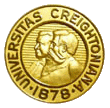|
December 19, 1995
Indigenous Justice Systems
Tribal Society is a way of life
By Ada Pecos Melton

In
many contemporary tribal communities, dual justice systems exist.
One is based on what can be called an American paradigm of justice,
and the other is based on what can be called an indigenous paradigm.
The American paradigm has its roots in
the world view of Europeans and is based on a retributive philosophy
that is hierarchical, adversarial, punitive, and guided by codified
laws and written rules, procedures, and guidelines.1
The
vertical power structure is upward, with decision making limited
to a few.
The retributive philosophy holds that because
the victim has suffered, the criminal should suffer as well. It
is premised on the notion that criminals are wicked people who are
responsible for their actions and deserve to be punished.2
Punishment is used to appease the victim,
to satisfy society's desire for revenge, and to reconcile the offender
to the community by paying a debt to society. It does not offer
a reduction in future crime or reparation to victims.
In
the American paradigm, the law is applied through an adversarial
system that places two differing parties in the courtroom to determine
a defendant's guilt or innocence, or to declare the winner or loser
in a civil case.
It focuses on one aspect of a problem,
the act involved, which is discussed through adversarial fact finding.
The court provides the forum for testing the evidence presented
from the differing perspectives and objectives of the parties.
Interaction between parties is minimized
and remains hostile throughout. In criminal cases, punitive sanctions
limit accountability of the offender to the state, instead of to
those he or she has harmed or to the community.
The
indigenous justice paradigm is based on a holistic philosophy and
the world view of the aboriginal inhabitants of North America. These
systems are guided by the unwritten customary laws, traditions,
and practices that are learned primarily by example and through
the oral teachings of tribal elders.3
The holistic philosophy is a circle of
justice that connects everyone involved with a problem or conflict
on a continuum, with everyone focused on the same center.
The center of the circle represents the
underlying issues that need to be resolved to attain peace and harmony
for the individuals and the community.
The continuum represents the entire process,
from disclosure of problems, to discussion and resolution, to making
amends and restoring relationships. The methods used are based on
concepts of restorative and reparative justice and the principles
of healing and living in harmony with all beings and with nature.4
Restorative
principles refer to the mending process for renewal of damaged personal
and communal relationships. The victim is the focal point, and the
goal is to heal and renew the victim's physical, emotional, mental,
and spiritual well-being.
It also involves deliberate acts by the
offender to regain dignity and trust, and to return to a healthy
physical, emotional, mental, and spiritual state. These are necessary
for the offender and victim to save face and to restore personal
and communal harmony.
Reparative
principles refer to the process of making things right for oneself
and those affected by the offender's behavior. To repair relationships,
it is essential for the offender to make amends through apology,
asking forgiveness, making restitution, and engaging in acts that
demonstrate a sincerity to make things right.
The communal aspect allows for crime to
be viewed as a natural human error that requires corrective intervention
by families and elders or tribal leaders. Thus, offenders remain
an integral part of the community because of their important role
in defining the boundaries of appropriate and inappropriate behavior
and the consequences associated with misconduct.
In
the American justice paradigm, separation of powers and separation
of church and state are essential doctrines to ensure that justice
occurs uncontaminated by politics and religion. For many tribes,
law and justice are part of a whole that prescribes a way of life.
Invoking the spiritual realm through prayer is essential throughout
the indigenous process.
Restoring spirituality and cleansing one's
soul are essential to the healing process for everyone involved
in a conflict. Therefore, separation doctrines are difficult for
tribes to embrace; many find it impossible to make such distinctions.
Whether this is good or bad is not the point. It is, however, an
example of the resistance of indigenous people to accept doctrines
or paradigms that contradict their holistic philosophy of life.
The
concept of law as a way of life makes law a living concept that
one comes to know and understand through experience. Law, as life,
is linked to the elaborate relationships in many tribal communities.
In some tribes it is exemplified by tribal
divisions that represent legal systems prescribing the individual
and kin relationships of members and the responsibilities individual
and group members have to one another and to the community.5
For example, in several Pueblo tribes,
one is born into one of two moieties, or tribal divisions, decided
by patrilineal lines. A woman can change membership only through
marriage, when she joins her husband's moiety.
Males generally cannot change their moiety,
unless it is done during childhood through adoption or if their
mother remarries into the opposite moiety. This illustrates how
tribal law becomes a way of life that is set in motion at birth,
and continues through an individual's life and death.
The
indigenous approach requires problems to be handled in their entirety.
Conflicts are not fragmented, nor is the process compartmentalized
into pre-adjudication, pretrial, adjudication, and sentencing stages.
These hinder the resolution process for
victims and offenders and delay the restoration of relationships
and communal harmony. All contributing factors are examined to address
the underlying issues that precipitated the problem, and everyone
affected by a problem participates in the process.
This distributive aspect generalizes individual
misconduct or criminal behavior to the offender's wider kin group,
hence there is a wider sharing of blame and guilt. The offender,
along with his or her kinsmen, are held accountable and responsible
for correcting behavior and repairing relatioships.6
| Differences
in justice paradigms |
|
|
|
American
Justice Paradigm
|
Indigenous
Justice Paradigm
|
| Vertical |
Holistic |
| Communication
is rehearsed |
Communication
is fluid |
| English
language is used |
Native
language is used |
| Written
statutory law derived from rules and procedure, written
record |
Oral
customary law learned as a way of life by example |
| Separation
of powers |
Law
and justice are part of a whole |
Separation
of church and state
|
The
spiritual realm is invoked in ceremonies and prayer |
Adversarial
and conflict oriented
|
Builds
trusting relationships to promote resolution and healing |
| Argumentative |
Talk
and discussion is essential |
Isolated
behavior, freeze-frame acts
|
Reviews
problem in its entirety, contributing factors are examined |
| Fragmented
approach to process and solutions |
Comprehensive
problem solving |
Time-oriented
process
|
No
time limits on the process, long silences and patience are
valued |
| Limits
participants in the process and solutions |
Inclusive
of all affected individuals in the process and solving problem
|
Represented
by strangers
|
Representation
by extended family members |
Focus
on individual rights
|
Focus
on victim and communal rights |
| Punitive
and removes offender
|
Corrective,
offenders are accountable and responsible for change |
|
Prescribes
penalties by and for the state
|
Customary
sanctions used to restore victim-offender relationship |
| Right
of accused, especially against self-incrimination |
Obligation
of accused to verbalize accountability |
Vindication
to society
|
Reparative
obligation to victims and community, apology and forgiveness |
| This
figure represents differences noted by Judge Christine Zuni,
with additional differences outlined by the author. Copyright
1995. All rights reserved. |
The
status of tribes as sovereign nations are both preconstitutional
and extraconstitutional. Tribes continue to possess four key characteristics
of their sovereign status: a distinctive permanent population, a
defined territory with identifiable borders, a government exercising
authority over territory and population, and the capacity to enter
into government-to-government relationships with other nation-states.7
Footnotes
Points of view
or opinions expressed in this article are those of the author and
do not necessarily represent the official position or policies of
the U.S. Department of Justice.
1.
Yazzie, Life Comes From It: Navajo Justice Concepts, Legal Education
Series, Alternatives in Dispute Resolution and Traditional Peacemaking
(Petaluma, Calif.: National Indian Justice Center, 1993) and Falk,
International Jurisdiction: Horizontal and Vertical Conceptions
of Legal Order. 32 Temple L. Q. 295 (1959).
2.
Travis, Introduction to Criminal Justice, Second Edition (Cincinnati:
Anderson Publishing Co., 1995) and Neubauer, America's Courts and
the Criminal Justice System, Second Edition (Monterey: Brooks/Cole
Publishing Company, 1984).
3.
Yazzie, supra n. 1; Tso, Decision Making in Tribal Courts, 31
Arizona L. Rev. (1989); and Zion, Searching for Indian Common Law,
in Morse and Woodman, (eds.), Indigenous Law and the State (Forus
Publications, 1988).
4.
Yazzie, supra n. 1, at 4.
5.
Connors and Brady, ''Alaska Native Traditional Dispute Resolution,''
paper presented at the National Conference on Traditional Peacemaking
and Modern Tribal Justice Systems in Albuquerque, New Mexico. Tribal
Justice Center, (1986) ''Indian Jurisprudence and Mediation the
Indian Way: A Case Review of the Saddle Lake Tribal Justice System,''
paper presented at the Conference on Mediation in Winnipeg, Manitoba.
6.
Melton, ''Traditional and Contemporary Tribal Law Enforcement:
A Comparative Analysis.'' Paper presented at the.Western Social
Science Association, 31st Annual Conference in Albuquerque, New
Mexico, (1989).
7.
Valencia-Weber and Zuni, pre-publication draft, (1995), ''Domestic
Violence and Tribal Protection of Indigenous Women in the United
States.'' to be published by St. John's University Law Review.
[Editor's
Note:This article first appeared in the November - December 1995
Issue (Volume 79, Number 3) of JUDICATURE, the Journal of the
American Judicature Society, and is reprinted with permission.
The full text is also availble for viewing in the Tribal
Court Clearing House journal.]
|
![]()
![]()
![]()






